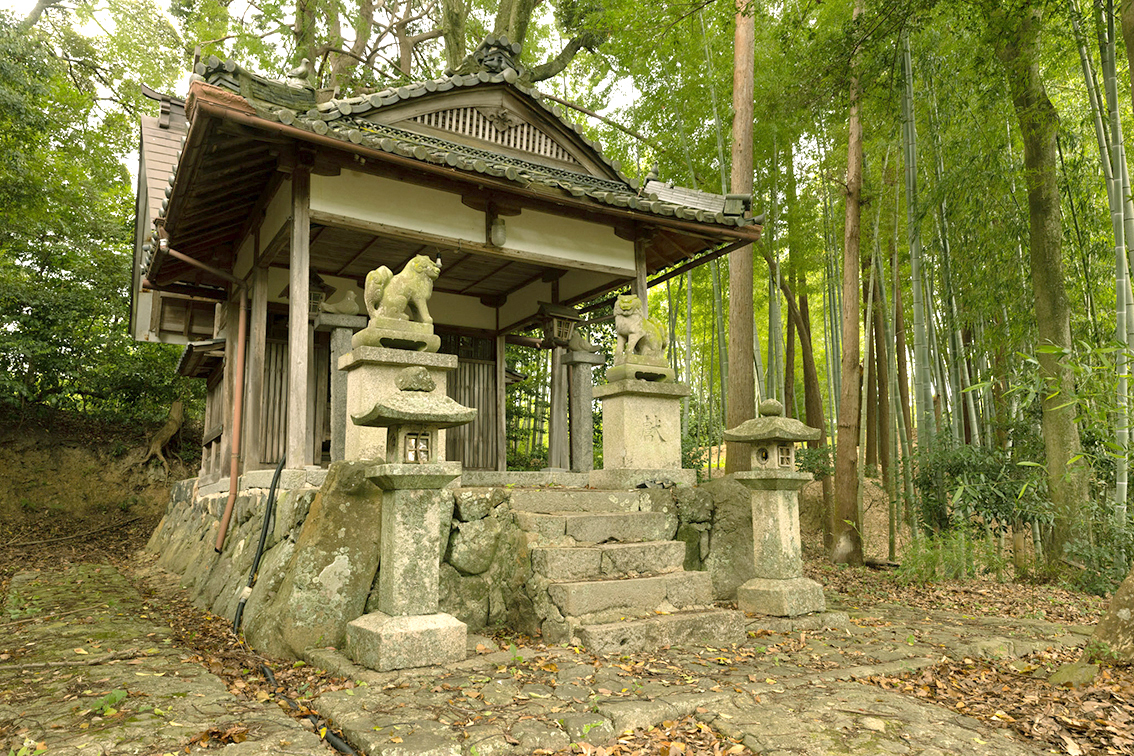The quiet Hachimangu Shrine in the Oharano Ishizukuri neighborhood is commonly referred to as Nagamine Hachimangu. The enshrined deities are Hachiman (deified Emperor Ojin, the 15th emperor of Japan), who is worshipped as a guardian of the country, and Amaterasu Omikami, the sun goddess considered the ancestral deity of the imperial family. The shrine’s founding date is unknown, but it is theorized that it may have been the location of Ishitsukuri Jinja, a shrine mentioned in the tenth-century Engishiki, a compilation of customs and official procedures that includes a list of all 2,861 shrines in existence at that time.
Connection to Ishitsukuri Shrine and Its Deity
Ishitsukuri no Okami, the deity that was enshrined in Ishitsukuri Shrine until the Edo period (1603–1867), is now worshipped at Otoshi Jinja Shrine, located a short walk to the east of Nagamine Hachimangu. Ishitsukuri no Okami is the ancestral deity of the Ishitsukuri clan, who were in charge of carving stone coffins for the nobility. It is said that they made the coffin for Hibasuhime no Mikoto, the wife of Emperor Suinin, the 11th emperor of Japan, and were rewarded with the high rank of omuraji for their service.
Sanctuary and Shrine Grounds
The iconography of Nagamine Hachimangu today is typical for Hachiman shrines and includes paired wooden carvings and stone guardian statues of doves, the sacred messengers of the deity Hachiman. The sanctuary is built on top of a small kofun (burial mound) that likely dates to the late Kofun period (300–538). Part of the mound’s interior can be seen through a hole in the right side of the shrine’s stone foundation. Three rare kagonoki (Litsea coreana) trees and a sacred 30-meter camphor tree believed to be 900 years old grow on the shrine grounds.
Address: Kyoto city, Nishikyo-ku, Ishizukuri-cho 40
Parking: Not Available
3 min walk from Nagamine bus stop

This English-language text was created by the Japan Tourism Agency.

